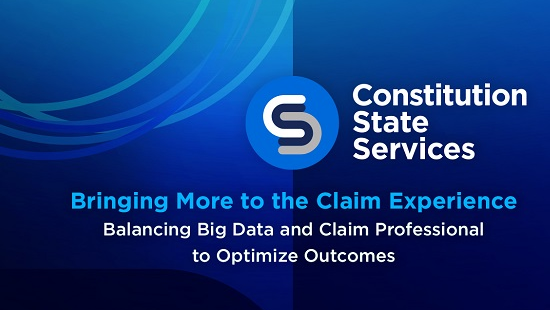Trends Driving Escalating Jury Verdicts

In just five years, the average verdict in the National Law Journal’s Top 100 Verdicts more than tripled from $64 million in 2015 to $214 million in 20191. It’s not just the number of record verdicts. In fact, the same data shows there were 30% more cases in 2019 that pierced the $100 million threshold than there were in 20151.
The trend is also notable within auto liability. A study from the American Transportation Research Institute showed a nearly 1,000% increase in large verdicts involving truck crashes. The average verdict size for a lawsuit above $1 million involving a truck crash increased from $2.3 million to $22.3 million over nine years2.
Why is this happening?
Changing cultural attitudes toward corporations combined with increasingly aggressive plaintiff attorneys are helping drive this unprecedented growth in liability verdicts.
Theories of negligence are now more expansive, so they can be harder to defend. Litigation may be filed sooner in the life of a claim, resulting in extensive discovery, motion practices and numerous issues litigated at trial. The appellate landscape has changed as well. It seems more common to see runaway verdicts affirmed on appeal.
(SPEECH) [MUSIC PLAYING]
(DESCRIPTION)
Logo, Constitution State Services, Taken for a Ride. The period after Retailer expands into a large white circle that contains contractor with a checkmark above it.
(SPEECH)
A national retailer is expanding its footprint. A respectable general contractor is hired, ground is broken, and the site is secured.
(DESCRIPTION)
The white circle flattens, cracks into pieces and falls down. A black hole remains and a grid appears over it.
(SPEECH)
One night a trespasser breaks in and joy rides on the equipment. He is seriously injured and sues. Who's responsible, the contractor? The retailer? Check your blind spot.
(DESCRIPTION)
A dollar sign inside a white circle rolls down a slope. The slope reverses and the dollar sign rolls down the other side. It rolls over a small crack, pauses at the edge of a crevasse, and falls into a deep dark pit.
(SPEECH)
In the past, the retailer would likely not have faced a liability claim. However, incidents that might not have been financially significant in the past today may turn into financial nightmares.
(DESCRIPTION)
The dollar sign continues to fall down the pit. A target appears and centers itself on the dollar sign as it falls.
(SPEECH)
Now more than ever before deep pockets are targets for lawsuits, why? Because societal standards for corporate responsibility are changing. A recent survey revealed that 88% of potential jurors believe that companies should take any and all precautions no matter how impractical or costly to ensure the safety of their products.
(DESCRIPTION)
The dollar sign draws a jagged line chart that goes up and down and up higher.
(SPEECH)
This can translate into more claims with larger dollar settlements and verdicts.
(DESCRIPTION)
A white circle floats down and nestles behind blue mountains. It spins out and turns light blue. Interconnected white, gray, and blue C's and S's form the Constitution State Services logo.
(SPEECH)
That's why in today's litigation friendly landscape it is especially important to choose the right third party administrator that has the deep expertise necessary to manage your claims and reduce your risk.
Constitution State Services has solutions to help protect you from your liability blind spots. Contact your broker and learn how.
[MUSIC PLAYING] (DESCRIPTION)
Logo, Constitution State Services. Text, Contact a broker to learn about solutions that are right for you. constitutionstateservices.com
In one case example, a national retailer hired a construction firm to build a new store, signed a contract and turned the project over. During excavation, a trespasser used a crowbar to access the worksite and suffered an injury while joyriding on equipment.
Just five years earlier plaintiff attorneys were likely to claim that the contractor was negligent for failing to adequately secure the site, while the retailer would not have faced liability. Attorneys now routinely expand their theories of negligence to include the entities with the biggest public profile and perceived financial resources. Today, that translates to allegations of liability on the retailer’s part based on its hiring, supervision and safety practices.
Three key trends to watch
Three key societal trends are further impacting verdicts and jury awards:
1. Shifting jury attitudes – A DecisionQuest study from 2018 that interviewed potential jurors really drives home how society views large companies today:
- 88% of the respondents believe that companies should take “any and all precautions” no matter how impractical or costly, to ensure the safety of their products3.
- 58% of respondents believe a corporation “always” has some responsibility for the injury, even if the customer is injured while misusing a product3.
Furthermore, negative feedback about brands increasingly goes viral on social media, further reinforcing newer cultural attitudes about corporate responsibility.
2. More attorney representation – When a plaintiff's attorney gets involved with a claim, it can quadruple4 costs.
3. Increasingly aggressive plaintiff’s bar tactics – Plaintiff attorneys are more likely to leverage every available tool, including analytics, in an effort to drive up jury awards in both general liability and auto liability claims.
More speculative life care plans
Plaintiff attorneys are increasingly leveraging the changing societal views on corporations, the value of money and personal responsibility when trying to take the focus away from the fundamental and necessary evaluation of liability in order to inflate the value of a claim in a given litigation.
One way they do that is by introducing much more robust, expansive and speculative medical plans. For cases with less significant medical costs, plaintiffs’ attorneys will often draw attention to pain and suffering to make an emotional appeal to the jury in order to capitalize on today’s shifting attitudes.
(DESCRIPTION)
Text, Constitution State Services, Falling Upward.
(SPEECH) [MUSIC PLAYING]
A visitor to your office trips and falls on the sidewalk outside, one of your employees immediately helps them up. The person declines medical care and walks away, but not before your employee gets the person's name and makes note of what happened.
(DESCRIPTION)
A paper reads NAME, INCIDENT.
(SPEECH)
To your surprise a few weeks later you receive a summons for a lawsuit. The person is suing for damages including over $1 million in future medical costs. What's going on? What might you be responsible for? Actual medical expenses, or an expansive and speculative life care plan?
(DESCRIPTION)
A heart rate monitor goes up and down erratically. Text, CHECK YOUR BLINDSPOT.
(SPEECH)
Many businesses are shocked at the sophisticated tactics some plaintiffs attorneys use to inflate medical costs and frame accidents involving a mild or moderate injury as something life impacting. How do you protect your business from potential blind spots?
Partner with Constitution State Services. We are a third party administrator with deep experience managing claims and advanced resources to help you protect your business in an increasingly challenging legal environment. Our medical resources help identify questionable treatments, so that we can defend against inflated claims.
With Constitution state services on your side trust that we'll help protect you from your blind spots. Contact a broker to learn about solutions that are right for you.
(DESCRIPTION)
Logo, Constitution State Services.
Text, Contact a broker to learn about solutions that are right for you. constitutionstateservices.com
Plaintiffs attorneys’ medical cost inflation tactics can frame an accident involving a mild or moderate injury as something “life-impacting.” For example, what would have been seen as a simple slip and fall case might now be characterized as a traumatic brain injury needing a speculative life care plan.
How you can respond to the new litigation landscape
While companies should continue to focus on safety and prevention to avoid incidents that can lead to cases like these, they also need to take concrete steps to plan for the worst. Taking these three steps can help manage the impacts of this challenging and changing legal environment:
- Step One: Ensure that your leadership in key areas understands that the societal standards for corporate accountability are changing. Litigation on a given claim today can look very different than it did just five years ago.
- Step Two: Plan ahead by having a liability catastrophe response plan in place. Don’t wait until you have a serious claim to assemble your team including legal, forensics, investigations and risk management.
- Step Three: Partner with a third-party-administrator (TPA) that has the deep experience and access to resources necessary to help defend you against expanding and changing claims of liability.
You can use your TPA to help navigate liability blind spots
As plaintiff attorneys cast a broader net when searching for liability targets and potential juries remain predisposed to place broad responsibility on corporations, choosing the right TPA is especially important. That’s why you should ask potential TPA partners for concrete examples of how they address these trends.
For example, at Constitution State Services (CSS), we apply multiple parallel strategies to help our clients manage expansive liability claims:
- We seek to mitigate attorney representation as soon as incidents are filed. Our Attorney Propensity Predictive Model helps us understand when attorney involvement may be likely based on key claim attributes. The model captures data on more than 200,000 plaintiff attorneys and 50,000 plaintiff attorney firms4. This allows us to have empathetic conversations sooner with claimants to try to avoid unnecessary litigation.
- Our knowledgeable liability-focused nurses work with Claim professionals to further ensure there is a clear understanding of the true medical situation. In addition, we apply sophisticated imaging technology to compare claimant’s images with both healthy and injured states to help provide fair and credible third-party estimates of medical costs.
- We use proprietary fraud models to evaluate claims for signs of potential fraud. A Claim analytics team checks these findings and when warranted, sends a referral to our Special Investigations Unit to follow up.
- If attorney representation or litigation is unavoidable, we have a team of experts who are trial tested, including litigation consultants, top trial counsel and technical resources to proactively manage litigation.
Contact CSS to learn more about how we can help you navigate the new liability landscape.
Sources:
1 National Law Journal’s 2015 and 2019 editions of the Top 100 Verdicts studies
2 Study from American Transportation Research Institute published June 23, 2020
3 2018 DecisionQuest study
4 2015-2019 Travelers Business Insurance Auto and GL bodily injury claims




